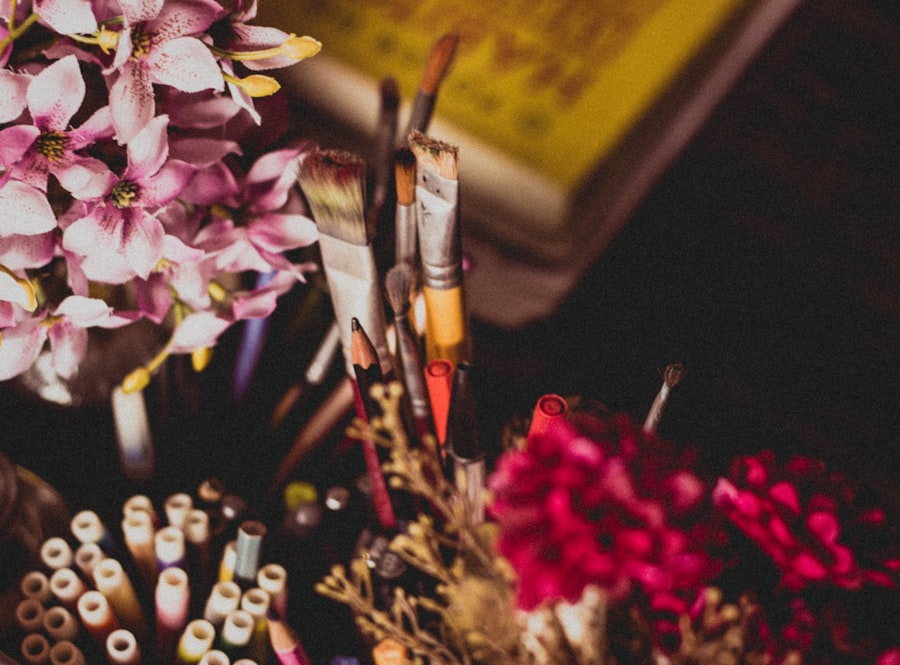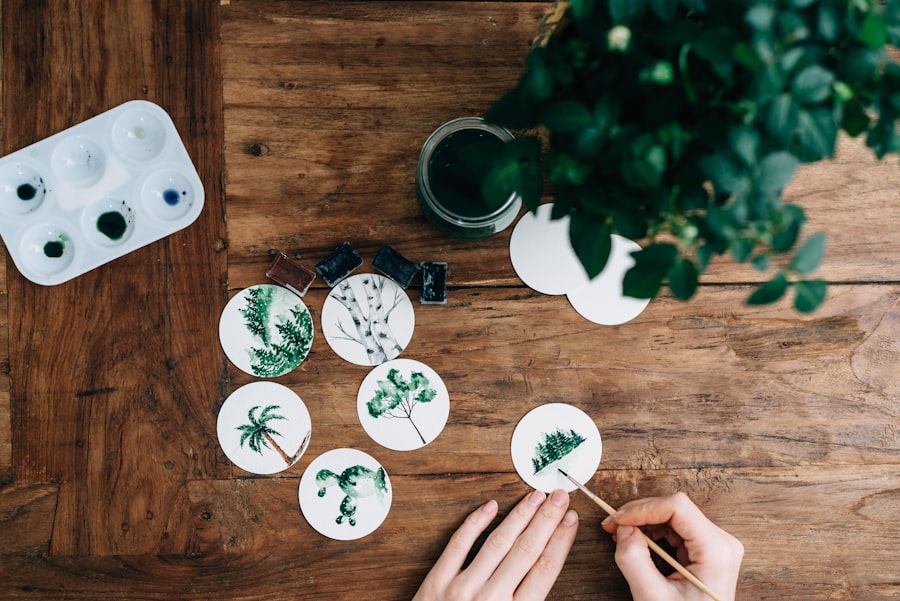Inspired imagery is a concept that transcends mere visual representation; it embodies the essence of creativity and emotional resonance. At its core, inspired imagery refers to the mental pictures or visions that arise from deep within, often ignited by personal experiences, emotions, or external stimuli. These images can serve as powerful catalysts for artistic expression, allowing individuals to convey complex ideas and feelings that might otherwise remain unarticulated.
The beauty of inspired imagery lies in its subjectivity; what inspires one person may not resonate with another, making it a deeply personal journey. The process of understanding inspired imagery involves delving into the interplay between perception and imagination. It requires an openness to explore the subconscious mind, where memories, dreams, and emotions intertwine to create vivid mental landscapes.
Artists and writers alike often draw upon these internal visions to craft their work, tapping into a wellspring of inspiration that is both unique and universal. By recognising the significance of these images, individuals can cultivate a richer understanding of their own creative impulses and the narratives they wish to share with the world.
The Power of Visualisation
Visualisation is a potent tool that harnesses the mind’s ability to create mental images, enabling individuals to manifest their desires and aspirations. This practice is not limited to artists; it can be employed by anyone seeking to enhance their personal or professional life. By vividly imagining a desired outcome, individuals can stimulate their motivation and focus, paving the way for success.
The power of visualisation lies in its capacity to bridge the gap between thought and reality, allowing one to envision possibilities that may seem unattainable. Moreover, visualisation can serve as a form of mental rehearsal, particularly in creative pursuits. Artists often use this technique to envision their work before it materialises on canvas or paper.
By mentally picturing each stroke of the brush or line of the pencil, they can refine their ideas and approach, leading to more cohesive and impactful creations. This practice not only enhances artistic skills but also fosters a deeper connection to the work itself, as the artist becomes intimately familiar with their vision before it is realised.
Techniques for Creating Inspired Imagery

Creating inspired imagery involves a variety of techniques that can help individuals tap into their creative potential. One effective method is free association, where one allows thoughts and images to flow without censorship or judgement. This technique encourages spontaneity and can lead to unexpected insights and connections.
By writing down or sketching these associations, individuals can begin to form a visual narrative that reflects their inner world. Another powerful technique is the use of mood boards or visual collages. By gathering images, colours, textures, and words that resonate with one’s emotions or aspirations, individuals can create a tangible representation of their inspired imagery.
This process not only serves as a source of inspiration but also acts as a reminder of one’s goals and desires. Additionally, engaging in mindfulness practices such as meditation can help clear mental clutter, allowing for greater clarity and focus when creating inspired imagery. By cultivating a calm and open mindset, individuals can more easily access their inner visions and translate them into artistic expression.
Using Inspired Imagery for Personal Growth
Inspired imagery can be a transformative tool for personal growth, offering insights into one’s values, desires, and potential paths forward. By engaging with these mental images, individuals can gain clarity about their aspirations and identify areas for development. For instance, visualising oneself in a desired future scenario can illuminate the steps needed to achieve that vision, fostering a sense of agency and purpose.
This process encourages self-reflection and introspection, allowing individuals to confront fears or limiting beliefs that may hinder their progress. Furthermore, inspired imagery can serve as a source of motivation during challenging times. When faced with obstacles or setbacks, recalling vivid mental images of success or fulfilment can reignite one’s passion and determination.
This practice not only bolsters resilience but also reinforces the belief that one’s dreams are attainable. By integrating inspired imagery into personal development strategies, individuals can cultivate a more profound sense of self-awareness and empowerment, ultimately leading to a more fulfilling life.
Incorporating Inspired Imagery into Daily Life
Incorporating inspired imagery into daily life requires intentionality and practice. One effective approach is to set aside time each day for creative exploration, whether through journaling, sketching, or simply daydreaming. By dedicating moments to engage with one’s imagination, individuals can cultivate a habit of seeking inspiration in everyday experiences.
This practice encourages mindfulness and presence, allowing one to notice the beauty and potential in the world around them. Additionally, surrounding oneself with visual stimuli can enhance the process of inspired imagery. Creating an environment filled with art, photographs, or objects that evoke positive emotions can serve as a constant reminder of one’s aspirations and creative potential.
Engaging with nature is another powerful way to inspire imagery; the sights, sounds, and textures of the natural world can awaken the senses and spark new ideas. By weaving inspired imagery into the fabric of daily life, individuals can foster a continuous flow of creativity and inspiration.
Inspired Imagery in Art and Creativity

Inspired imagery plays a pivotal role in the realm of art and creativity, serving as the foundation upon which countless masterpieces are built. Artists often draw upon their own experiences, emotions, and observations to create works that resonate with viewers on multiple levels. The ability to translate inspired imagery into visual form is what distinguishes great art from mere representation; it is the infusion of personal vision that breathes life into a piece.
Moreover, inspired imagery allows artists to explore complex themes and narratives that may be difficult to articulate through words alone. Through colour, form, and composition, they can convey emotions and ideas that evoke powerful responses from their audience. This connection between artist and viewer is what makes art such a profound medium for communication; it transcends language barriers and speaks directly to the human experience.
By embracing inspired imagery in their creative process, artists can unlock new dimensions of expression and innovation.
The Science Behind Inspired Imagery
The phenomenon of inspired imagery is not merely an abstract concept; it is grounded in scientific principles related to cognition and creativity. Research has shown that engaging with visualisation techniques can activate specific areas of the brain associated with imagination and memory. When individuals create mental images, they stimulate neural pathways that enhance cognitive flexibility and problem-solving abilities.
This neurological basis underscores the importance of inspired imagery in fostering creativity across various disciplines. Furthermore, studies have indicated that visualisation can have tangible effects on performance outcomes. Athletes often employ mental imagery techniques to enhance their skills and focus during competitions.
Similarly, artists who engage in visualisation practices may find themselves more adept at translating their ideas into tangible forms. The science behind inspired imagery highlights its potential as a powerful tool for enhancing creativity and performance in both artistic endeavours and everyday life.
Finding Inspiration through Imagery
Finding inspiration through imagery is an ongoing journey that requires curiosity and openness to new experiences. One effective way to cultivate inspiration is by exploring diverse sources of visual stimuli—be it through art galleries, nature walks, or even digital platforms showcasing creative works from around the world. Each encounter with new imagery has the potential to spark fresh ideas and perspectives.
Additionally, engaging with other artists or creative individuals can provide valuable insights into different approaches to inspired imagery. Collaborative projects or discussions about creative processes can lead to unexpected breakthroughs and inspire new directions in one’s work. Ultimately, finding inspiration through imagery is about remaining attuned to the world around us—recognising that inspiration often lies just beneath the surface, waiting to be uncovered through exploration and engagement with our surroundings.
By embracing this mindset, individuals can continually enrich their creative practice and discover new avenues for expression.
If you are interested in exploring the world of art techniques, you may want to read an introduction to the art technique illusionistic ceiling painting. This article delves into the fascinating world of creating optical illusions on ceilings through painting. It is a great companion piece to the concept of Inspired Imagery, as both explore the ways in which art can captivate and inspire viewers.



